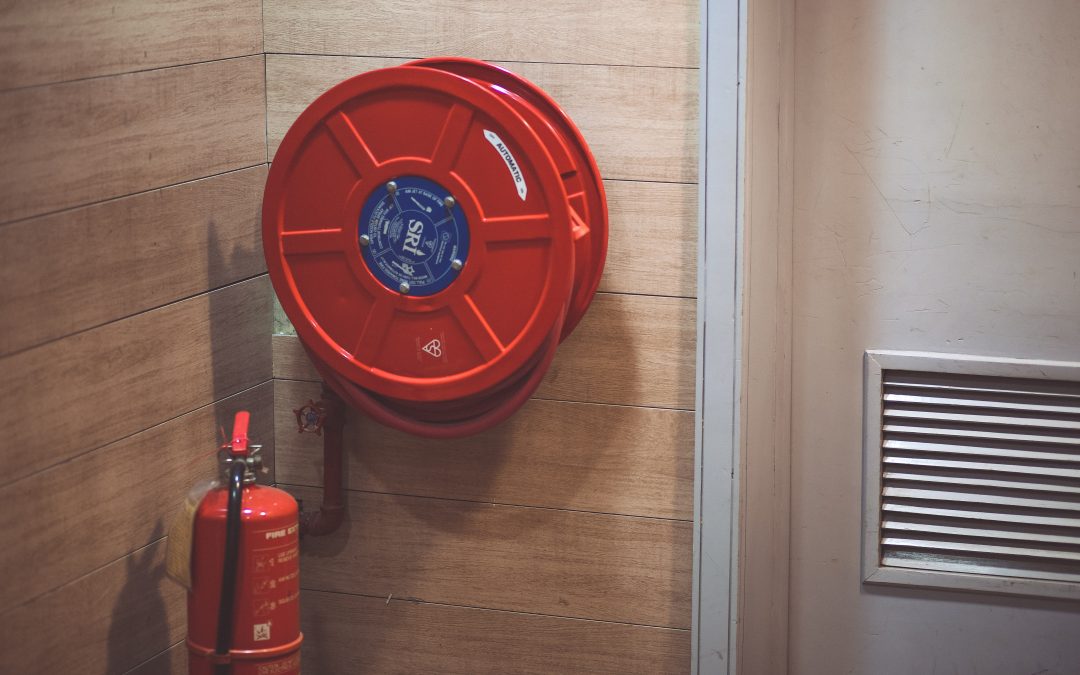Fire safety is perhaps one of the biggest concerns many people have when it comes to the well-being of their family and homes. But, the concern extends far beyond residential… commercial, healthcare, business and educational facilities all heavily rely on proper fire safety elements to keep their occupants safe and structures in tact. To adhere to regulations and address fire safety concerns, fire doors are used as a critical element to safe-guard a property and the lives inside.
All too often fire door education comes too late, after an unfortunate incident occurs; yet, this is an opportunity for us all to be smarter than the flames.
How a Fire Door Works
A fire door is exactly as it sounds. These doors are specifically designed and built to minimize the spread of a fire, and any fumes or smoke. Most fire doors cannot permanently sustain the beast… they just slow it down. The overall goal of a fire door is to save lives while creating a protection barrier that will isolate the remaining structure from any further damage by the fire and smoke. There are many different grades of fire doors and each one is designed to provide between 30 to 120 minutes of fire protection.
Fire doors are manufactured with layers of fire-resistant materials. A premium fire door will typically have all or some of the popular fire-resistant materials – varying layers of steel, wire-mesh, glass, gypsum, and/or vermiculite.
Additionally, many fire doors are appeasing to the eye, and constructed to match the décor of the home or establishment. The exterior may be wood or veneer, or it may just look like a simple metal/aluminum door. A fire door can be beautiful and sleek on the outside, while hidden on the inside are layers and layers of superior fire-resistant material that will significantly slow down a raging fire in the unfortunate event there ever is one.
Here is the exceptional thing about fire doors, and ultimately what sets them apart from other doors on the market… the interior of a fire door has intumescent strips. These strips are what will define the rating of the door; they activate when excessive heat is sensed. The activation of the intumescent strips is what prompts the materials in the door to expand and seal off the door and any gaps.
Fire Door Standard Requirements
There are specific fire door rules, regulations, and recommendations. The requirements vary from commercial to residential, and could also vary by industry. The higher the occupancy, typically the stricter the requirements are for fire protection. It’s also important to remember that ALL commercial buildings are required to have fire doors according to regulations issued in 2005. But, residential homes do not have this same requirement. Even though homes do have fire door regulations, this standard is often not enforced in residential construction and can easily be overlooked.
Residential Fire Door Codes
Fire doors are recommended for homes that have 2 or more stories. Upper levels can be challenging to evacuate in the case of a fire, and therefore a fire door could potentially offer time that will save lives. The recommendation for residential dwellings is to have a fire door installed that separates the stairwell from the bedrooms. Additionally, a home attached to a garage should have a fire door leading to the garage to protect the home.
Not only do these fire-rated doors protect you and your loved ones, but they can also protect your home and the assets inside. If you do not have a fire door in your home, there is no better time than the present to start investigating options that would provide your home and family superior protection.
Commercial Building (Non-Domestic Buildings) Codes
The codes for commercial buildings take some intensive interpretation. Every commercial building varies vastly, so you must know the requirements in order to comply. On the flip side, industry guidance is pretty specific for fire door locations in a commercial building. The guidance goes so far as to break out how doors should be installed in both horizontal and vertical routes. The routes are designed by the specific fire escape plans of that particular building and company.
In order for fire doors to be effective, they are required to either automatically close when activated by a fire system or to remain closed when not in use. Ultimately, the recommendation is that fire doors should be closed at all times for proper fire safety.
Fire doors must also be properly labeled for easy identification.
Inspections
If you are unsure about whether you need a fire door or whether any existing fire doors have been properly placed, we recommend having an assessment done by a professional fire risk assessment company. Commercial businesses and properties are typically required to have testing and assessments completed on a routine basis. For a residential property, you might be able to speak with your local fire department for additional tips and assessments to ensure your home is protected in the event of a fire. Thankfully there are inspection companies in place that audit and test fire equipment, from fire doors to alarm systems to fire extinguishers.
Conclusion
One never knows when the beast of a fire can rage out of control. Be prepared.
There are countless fire doors available, so before choosing a fire door it’s important to reach out to a company who understands the standards and regulations of fire protection. Regular fire safety inspections and assessments are also critical to not only protect you, but also to provide you with peace of mind.
Whether you are protecting a home or a business, the assets and lives within these structures deserve to be protected entirely. Fire doors offer that superior level of protection, and is an investment you absolutely can’t afford not to make.



Recent Comments